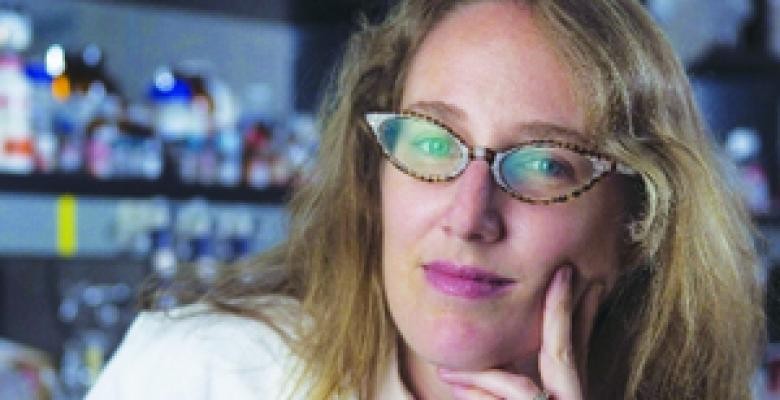Professor Virginia Cornish Working to Engineer Yeast to Detect Cholera

Modern science is immensely complex, but Professor Virginia Cornish had a simple idea for solving a big problem.
The problem was cholera, which infects about four million people annually and kills at least 100,000, most of them children under age 5. Inspired by a research proposal from one of her doctoral students, Cornish, the Helena Rubinstein Professor of Chemistry, has set her lab to engineering a simple yeast—not unlike the kind used to make beer or bread—to detect cholera-causing bacteria in water supplies and the feces of infected people.
“If we can buy Fleischmann’s Yeast in the grocery store, why not make a freeze-dried yeast available that can detect cholera?” asked Cornish. “We want to enable a nontechnical person, in the simplest setting, to be able to safely and easily use this—not in a lab but in their home.”
Cornish’s interdisciplinary lab in the Northwest Corner Building focuses on synthetic biology, the science of building biomolecules and guiding cell evolution. The last century saw tremendous strides in the field of synthetic chemistry, with scientists learning to build molecules composed of about 100 atoms to make drugs in large quantities.
The discovery of DNA, and the wealth of powerful techniques in molecular biology that followed, revolutionized biological research, allowing researchers to manipulate sophisticated biomolecules such as antibodies. The new field of synthetic biology now attempts to bring together biologists, chemists and engineers to design and construct living cells to take on new challenges from disease detection to clean energy.
Cornish’s research has been funded with a starter grant of $100,000 from the Bill and Melinda Gates Foundation, whose officials hope to find a tool for developing nations to quickly and cheaply determine the presence of cholera and other diarrheal diseases. These diseases are often easily treatable but are extremely dangerous, spread rapidly and can kill infected people within hours due to severe dehydration if not treated properly.
The project began when Nili Ostrov, a Ph.D. candidate in chemistry, seized on the idea of using synthetic biology to create a sensor or test for cholera for her fourth-year original research proposal requirement.
The researchers consulted with colleagues at the Mailman School of Public Health, including Dr. Alastair Ager, professor of clinical population and family health, who put them in touch with the U.S. Centers for Disease Control and Prevention. The CDC was excited about the potential of the research and urged the Columbia team to explore creating sensors to detect diseases similar to cholera.
So how do you turn humble baker’s yeast into a disease-detecting machine? The team will engineer a receptor on the yeast that can detect the target bacteria. If bacteria are found, the receptor will activate signaling molecules incorporated into the yeast cells to make lycopene—the organic pigment that gives tomatoes their red color. Then the water or other bacteria-laden substance will turn a bright red, indicating that it is contaminated and needs to be disposed of in a safe manner.“
The beauty of yeast is that it’s a living system that propagates itself,” said Cornish. “If we can create this and give it to a country that needs it, they can make as much as they want. If you can brew beer, you can produce this.”
By next June, Cornish’s team hopes to show that they can recognize and signal at least one target pathogen. That will enable them to apply for a grant of $1 million from Gates to continue the work, conduct field trials and ultimately bring the sensor to the countries where it is needed most to save lives.